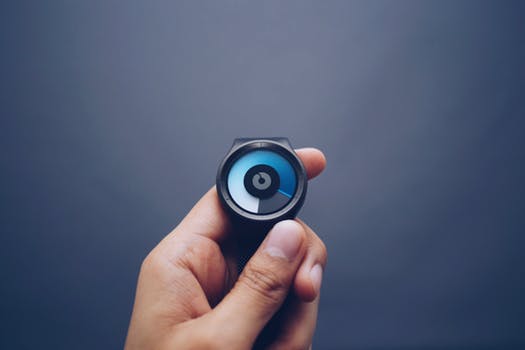TheDeveloperBlog.com
C-Sharp | Java | Python | Swift | GO | WPF | Ruby | Scala | F# | JavaScript | SQL | PHP | Angular | HTML
Computer Graphics Flat Panel Display
Computer Graphics Flat Panel Display with Computer Graphics Tutorial, Line Generation Algorithm, 2D Transformation, 3D Computer Graphics, Types of Curves, Surfaces, Computer Animation, Animation Techniques, Keyframing, Fractals etc.
Flat Panel Display:The Flat-Panel display refers to a class of video devices that have reduced volume, weight and power requirement compare to CRT. Example: Small T.V. monitor, calculator, pocket video games, laptop computers, an advertisement board in elevator. 
1. Emissive Display: The emissive displays are devices that convert electrical energy into light. Examples are Plasma Panel, thin film electroluminescent display and LED (Light Emitting Diodes). 2. Non-Emissive Display: The Non-Emissive displays use optical effects to convert sunlight or light from some other source into graphics patterns. Examples are LCD (Liquid Crystal Device). Plasma Panel Display:
Plasma-Panels are also called as Gas-Discharge Display. It consists of an array of small lights. Lights are fluorescent in nature. The essential components of the plasma-panel display are:
The gas will slow when there is a significant voltage difference between horizontal and vertical wires. The voltage level is kept between 90 volts to 120 volts. Plasma level does not require refreshing. Erasing is done by reducing the voltage to 90 volts. Each cell of plasma has two states, so cell is said to be stable. Displayable point in plasma panel is made by the crossing of the horizontal and vertical grid. The resolution of the plasma panel can be up to 512 * 512 pixels. Figure shows the state of cell in plasma panel display: 
Advantage:
Disadvantage:
LED (Light Emitting Diode):
In an LED, a matrix of diodes is organized to form the pixel positions in the display and picture definition is stored in a refresh buffer. Data is read from the refresh buffer and converted to voltage levels that are applied to the diodes to produce the light pattern in the display. LCD (Liquid Crystal Display):
Liquid Crystal Displays are the devices that produce a picture by passing polarized light from the surroundings or from an internal light source through a liquid-crystal material that transmits the light. LCD uses the liquid-crystal material between two glass plates; each plate is the right angle to each other between plates liquid is filled. One glass plate consists of rows of conductors arranged in vertical direction. Another glass plate is consisting of a row of conductors arranged in horizontal direction. The pixel position is determined by the intersection of the vertical & horizontal conductor. This position is an active part of the screen. Liquid crystal display is temperature dependent. It is between zero to seventy degree Celsius. It is flat and requires very little power to operate. 
Advantage:
Disadvantage:
Look-Up Table:Image representation is essentially the description of pixel colors. There are three primary colors: R (red), G (green) and B (blue). Each primary color can take on intensity levels produces a variety of colors. Using direct coding, we may allocate 3 bits for each pixel, with one bit for each primary color. The 3-bit representation allows each primary to vary independently between two intensity levels: 0 (off) or 1 (on). Hence each pixel can take on one of the eight colors.
A widely accepted industry standard uses 3 bytes, or 24 bytes, per pixel, with one byte for each primary color. The way, we allow each primary color to have 256 different intensity levels. Thus a pixel can take on a color from 256 x 256 x 256 or 16.7 million possible choices. The 24-bit format is commonly referred to as the actual color representation. Lookup Table approach reduces the storage requirement. In this approach pixel values do not code colors directly. Alternatively, they are addresses or indices into a table of color values. The color of a particular pixel is determined by the color value in the table entry that the value of the pixel references. Figure shows a look-up table with 256 entries. The entries have addresses 0 through 255. Each entry contains a 24-bit RGB color value. Pixel values are now 1-byte. The color of a pixel whose value is i, where 0 <i<255, is persistence by the color value in the table entry whose address is i. It reduces the storage requirement of a 1000 x 1000 image to one million bytes plus 768 bytes for the color values in the look-up table. 
Next TopicInput Devices
|
Related Links:
- Computer Network | Transport Layer Protocols
- Computer Network | Application Layer
- Computer Graphics Cathode Ray Tube | CRT
- Computer Graphics Direct View Storage Tubes
- Computer Graphics Flat Panel Display
- Computer Graphics | Input Devices
- Computer Graphics Scan Conversion Definition
- Computer Graphics | Trackball
- Computer Graphics | Light Pen
- Computer Graphics | Image Scanner
- Computer Graphics | Output Devices
- Computer Graphics | Plotters
- Computer Graphics Scan Converting a Point
- Computer Graphics Scan Converting a Straight Line
- Computer Graphics DDA Algorithm
- Computer Graphics Bresenham's Line Algorithm
- Computer Graphics Defining a Circle
- Computer Graphics Boundary Fill Algorithm
- Computer Graphics Flood Fill Algorithm
- Computer Graphics Scan Line Polygon Fill Algorithm
- Computer Graphics | Line Clipping
- Computer Graphics Introduction of Transformation
- Computer Graphics Translation
- Computer Graphics Scaling
- Computer Graphics Rotation
- Computer Graphics Reflection
- Computer Graphics Shearing
- Computer Graphics Homogeneous Coordinates
- Computer Graphics Composite Transformation
- Computer Graphics Window
- Computer Graphics Window to Viewport Co-ordinate Transformation
- Computer Graphics Zooming
- Computer Graphics Panning
- Computer Network | Error Correction
- Computer Network | Error Detection
- Computer Architecture VS Computer Organization
- Computer Instructions | Computer Organization and Architecture Tutorial
- Computer Registers
- Computer Network Routing | Types of Routing
- Computer Network | Digital Signature
- PGP - Pretty Good Privacy
- Computer Graphics Programs
- Computer Graphics | Clipping
- Computer Network Tutorial
- Computer Graphics Tutorial
- Computer Graphics | Text Clipping
- Computer Graphics | Polygon
- Computer Graphics Pointing and Positioning Techniques
- Computer Graphics Elastic or Rubber Band Techniques
- Computer Graphics Color CRT Monitors
- Computer Graphics | Point Clipping
- Computer Graphics Dragging
- Computer Graphics 3D Shearing
- Computer Graphics Introduction of Shading
- Computer Network | TCP/IP model
- Computer Graphics Constant Intensity Shading
- Computer Graphics Gouraud shading
- Computer Graphics Phong Shading
- Computer Graphics Animation
- Computer Graphics Hidden Surface Removal
- Computer Graphics Back Face Removal Algorithm
- Computer Graphics Application Areas of Animation
- Computer Graphics Animation Functions
- Computer Graphics 3D Graphics
- Computer Graphics 3D Transformations
- Computer Graphics 3D Scaling
- Computer Graphics 3D Rotation
- Computer Graphics 3D Rotation about Arbitrary Axis
- Computer Graphics 3D Inverse Transformations
- Computer Graphics 3D Reflection
- Computer Organization and Architecture Tutorial | COA Tutorial
- Computer Graphics Bresenham's Circle Algorithm
- Computer Graphics Midpoint Circle Algorithm
- Computer Graphics Painter's Algorithm
- Computer Graphics Scan Line Algorithm
- Computer Graphics Area Subdivision Algorithm
- Computer Graphics 3D Modelling System
- Computer Graphics Projection
- Computer Graphics Perspective Projection
- Computer Graphics Parallel Projection
- Computer Network Digital Transmission
- Top 50 Computer Graphics Interview Questions (2021)
- Computer Graphics Midpoint Ellipse Algorithm
- HTTP - HyperText Transfer Protocol
- Computer Graphics Z-Buffer Algorithm
- Computer Graphics Display Processor
- Computer Network | Routing Algorithm
- Learn Computer Fundamentals Tutorial
- Computer Graphics Scan converting a Ellipse
- Computer Graphics Polynomial Method
- Computer Graphics Trignometric Method
- Computer Network Introduction
- Computer Network Components
- Computer Network Topologies
- Computer Network | Transmission Modes
- Computer Network Models
- Computer Network | Switching Techniques
- Computer Network | Switching Modes
- Computer Network | Client and Server Model
- DNS - Domain Name System
- FTP - File Transfer Protocol
- Telnet - Terminal Network
- Computer Network Features
- Computer Network Architecture
- Computer Network | Switching
- Computer Network Security
- Computer Network Privacy
- Computer Network | Transport Layer


